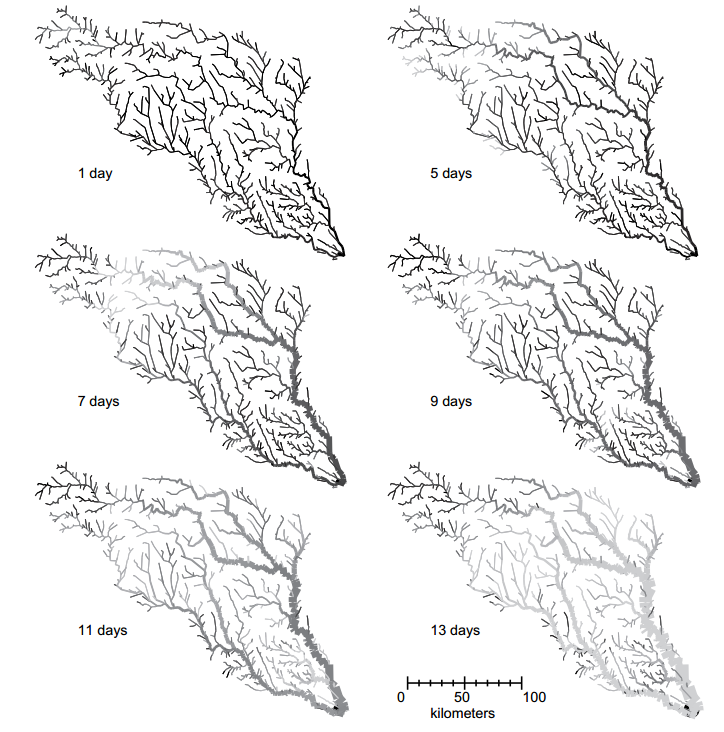Applying microprocessor analysis methods to river network modeling
ABSTRACT: This paper describes the Simulation Program for River Networks (SPRINT) that is proposed as a tool for studying Continental River Dynamics (CRD), the solution of physics-based equations for large-scale river networks. Existing coupled hydrologic/hydraulic models have been unable to solve the full Saint-Venant equations for river networks larger than O(103) elements, but continental scales require 106–107 elements. The new model solves the full nonlinear Saint-Venant equations for one-dimensional (1D) unsteady flow and stage height in river channel networks with non-uniform bathymetry, and is demonstrated to compute networks of O(105) elements more than 330 times faster than real time on a desktop computer. The model incorporates ideas that were originally developed to address Very Large System Integration (VLSI) problems in microprocessor design, where solving large nonlinear computational problems is a common challenge. Computational speed is increased by applying Jacobian bypass techniques in a Newton–Raphson solution and smoothing the geometric depth-area and friction-area relationships where discontinuities otherwise slow convergence. Pre-processing of junction relationships is used to remove temporal nonlinearities where river tributaries meet. Model input/output are simplified and made readily accessible to other software through use of Application Programming Interface (API) standards and a “netlist” idea that was previously used to describe electric circuit topology. The model is tested on both simple and complex geometry through comparisons with the HEC-RAS model. A example simulation is conducted for 1.5 × 104 river km of the Guadalupe and San Antonio river network during a 14 day rain event.

Fig. 13. Guadalupe and San Antonio Rivers. Color scale represents normalized channel cross-sectional area. Line width represents scaled flow rate.

